- Home
- Paul Doherty
Mathild 03 - The Darkening Glass
Mathild 03 - The Darkening Glass Read online
THE DARKENING GLASS
Paul Doherty
headline
Copyright © 2009 Paul Doherty
The right of Paul Doherty to be identified as the Author of the Work has been asserted by him in accordance with the Copyright, Designs and Patents Act 1988.
First published as an Ebook by Headline Publishing Group in 2012
All rights reserved. No part of this publication may be reproduced, stored in a retrieval system, or transmitted, in any form or by any means without the prior written permission of the publisher, nor be otherwise circulated in any form of binding or cover other than that in which it is published and without a similar condition being imposed on the subsequent purchaser.
This Ebook produced by Jouve Digitalisation des Informations
All characters in this publication are fictitious and any resemblance to real persons, living or dead, is purely coincidental.
eISBN: 978 0 7553 7036 8
HEADLINE PUBLISHING GROUP
An Hachette UK Company
338 Euston Road
London
NW1 3BH
www.headline.co.uk
www.hachettelivre.co.uk
Table of Contents
Title Page
Copyright Page
Letter to the Reader
About the Author
Also by Paul Doherty
Praise for Paul Doherty
Dedication
Historical Personages
Foreword
Prologue
Chapter 1
Chapter 2
Chapter 3
Chapter 4
Chapter 5
Chapter 6
Chapter 7
Chapter 8
Chapter 9
Chapter 10
Author’s Note
History has always fascinated me. I see my stories as a time machine. I want to intrigue you with a murderous mystery and a tangled plot, but I also want you to experience what it was like to slip along the shadow-thronged alleyways of medieval London; to enter a soaringly majestic cathedral but then walk out and glimpse the gruesome execution scaffolds rising high on the other side of the square. In my novels you will sit in the oaken stalls of a gothic abbey and hear the glorious psalms of plain chant even as you glimpse white, sinister gargoyle faces peering out at you from deep cowls and hoods. Or there again, you may ride out in a chariot as it thunders across the Redlands of Ancient Egypt or leave the sunlight and golden warmth of the Nile as you enter the marble coldness of a pyramid’s deadly maze. Smells and sounds, sights and spectacles will be conjured up to catch your imagination and so create times and places now long gone. You will march to Jerusalem with the first Crusaders or enter the Colosseum of Rome, where the sand sparkles like gold and the crowds bay for the blood of some gladiator. Of course, if you wish, you can always return to the lush dark greenness of medieval England and take your seat in some tavern along the ancient moon-washed road to Canterbury and listen to some ghostly tale which chills the heart . . . my books will take you there then safely bring you back!
The periods that have piqued my interest and about which I have written are many and varied. I hope you enjoy the read and would love to hear your thoughts – I always appreciate any feedback from readers. Visit my publisher’s website here: www.headline.co.uk and find out more. You may also visit my website: www.paulcdoherty.com or email me on: [email protected].
Paul Doherty
About the Author
Paul Doherty is one of the most prolific, and lauded, authors of historical mysteries in the world today. His expertise in all areas of history is illustrated in the many series that he writes about, from the Mathilde of Westminster series, set at the court of Edward II, to the Amerotke series, set in Ancient Egypt. Amongst his most memorable creations are Hugh Corbett, Brother Athelstan and Roger Shallot.
Paul Doherty was born in Middlesbrough. He studied history at Liverpool and Oxford Universities and obtained a doctorate at Oxford for his thesis on Edward II and Queen Isabella. He is now headmaster of a school in north-east London and lives with his wife and family near Epping Forest.
Also by Paul Doherty
Mathilde of Westminster
THE CUP OF GHOSTS
THE POISON MAIDEN
THE DARKENING GLASS
Sir Roger Shallot
THE WHITE ROSE MURDERS
THE POISONED CHALICE
THE GRAIL MURDERS
A BROOD OF VIPERS
THE GALLOWS MURDERS
THE RELIC MURDERS
Templar
THE TEMPLAR
THE TEMPLAR MAGICIAN
Mahu (The Akhenaten trilogy)
AN EVIL SPIRIT OUT OF THE WEST
THE SEASON OF THE HYAENA
THE YEAR OF THE COBRA
Canterbury Tales by Night
AN ANCIENT EVIL
A TAPESTRY OF MURDERS
A TOURNAMENT OF MURDERS
GHOSTLY MURDERS
THE HANGMAN’S HYMN
A HAUNT OF MURDER
Egyptian Mysteries
THE MASK OF RA
THE HORUS KILLINGS
THE ANUBIS SLAYINGS
THE SLAYERS OF SETH
THE ASSASSINS OF ISIS
THE POISONER OF PTAH
THE SPIES OF SOBECK
Constantine the Great
DOMINA
MURDER IMPERIAL
THE SONG OF THE GLADIATOR
THE QUEEN OF THE NIGHT
MURDER’S IMMORTAL MASK
Hugh Corbett
SATAN IN ST MARY’S
THE CROWN IN DARKNESS
SPY IN CHANCERY
THE ANGEL OF DEATH
THE PRINCE OF DARKNESS
MURDER WEARS A COWL
THE ASSASSIN IN THE GREENWOOD
THE SONG OF A DARK ANGEL
SATAN’S FIRE
THE DEVIL’S HUNT
THE DEMON ARCHER
THE TREASON OF THE GHOSTS
CORPSE CANDLE
THE MAGICIAN’S DEATH
THE WAXMAN MURDERS
NIGHTSHADE
THE MYSTERIUM
Standalone Titles
THE ROSE DEMON
THE HAUNTING
THE SOUL SLAYER
THE PLAGUE LORD
THE DEATH OF A KING
PRINCE DRAKULYA
THE LORD COUNT DRAKULYA
THE FATE OF PRINCES
DOVE AMONGST THE HAWKS
THE MASKED MAN
As Vanessa Alexander
THE LOVE KNOT
OF LOVE AND WAR
THE LOVING CUP
Kathryn Swinbrooke (as C L Grace)
SHRINE OF MURDERS
EYE OF GOD
MERCHANT OF DEATH
BOOK OF SHADOWS
SAINTLY MURDERS
MAZE OF MURDERS
FEAST OF POISONS
Nicholas Segalla (as Ann Dukthas)
A TIME FOR THE DEATH OF A KING
THE PRINCE LOST TO TIME
THE TIME OF MURDER AT MAYERLING
IN THE TIME OF THE POISONED QUEEN
Mysteries of Alexander the Great (as Anna Apostolou)
A MURDER IN MACEDON
A MURDER IN THEBES
Alexander the Great
THE HOUSE OF DEATH
THE GODLESS MAN
THE GATES OF HELL
Matthew Jankyn (as P C Doherty)
THE WHYTE HARTE
THE SERPENT AMONGST THE LILIES
Non-fiction
THE MYSTERIOUS DEATH OF TUTANKHAMUN
ISABELLA AND THE STRANGE DEATH OF EDWARD II
ALEXANDER THE GREAT: THE DEATH OF A GOD
<
br /> THE GREAT CROWN JEWELS ROBBERY OF 1303
THE SECRET LIFE OF ELIZABETH I
THE DEATH OF THE RED KING
Praise for Paul Doherty
‘Teems with colour, energy and spills’ Time Out
‘Paul Doherty has a lively sense of history . . . evocative and lyrical descriptions’ New Statesman
‘Extensive and penetrating research coupled with a strong plot and bold characterisation. Loads of adventure and a dazzling evocation of the past’ Herald Sun, Melbourne
‘An opulent banquet to satisfy the most murderous appetite’ Northern Echo
‘As well as penning an exciting plot with vivid characters, Doherty excels at bringing the medieval period to life, with his detailed descriptions giving the reader a strong sense of place and time’ South Wales Argus
For members of the Richard John Stephenson family from the past, present and future [Daryll Kelly]
Historical Personages
Foreword
In July 1307, Edward I died, to be immediately succeeded by Edward of Caernarvon, Prince of Wales. In January 1308, the new King Edward married the young Isabella, daughter of Philip IV of France. Isabella, however, faced a rival, Peter (or Pierre) Gaveston, a young Gascon of lowly birth whom Edward immediately promoted to become a premier earl, granting him the lucrative Duchy of Cornwall. Between 1308 and the spring of 1312, Gaveston was hotly resisted by the great earls of England, who resented his status and his control over both king and crown. They issued ordinances against him, and tried to have him exiled but both the king and Gaveston fiercely resisted such opposition. In the early spring of 1312, both sides slipped towards civil war at the very time Isabella began to proclaim her own power as both queen and wife. The kingdom tensed itself: the question of power and government was to be decided by the sword, bloody intrigue and gruesome murder.
The quotations at the beginning of each chapter come from the Vita Edwarde Secundi – the Life of Edward II, a contemporary chronicle. An author’s note at the end gives the historical context of the stirring events of Mathilde’s account.
Prologue
He who loses the most . . . is judged the more brave and the stronger.
I awake. The dark fell of night presses down. I lie and seethe against the dying light in my own life. Shadows shroud the mountains and deep valleys of my soul, all peopled by ghosts of yesteryear. I listen to the patter of feet as the sacristan and his escort, lanterns in hand, keep strict vigil between Compline and Matins here in the Priory of Grey Friars, nestling like some bird beneath the soaring glory of St Paul’s. If I rise and peer out of the window, I can glimpse the jutting belfry of the cathedral, its beacon light glowing above the night-shadowed lanes and trackways of Cheapside, with its cross, tun and standard. The busy heart of the buzzing beehive of London. Bells, echoing sombrely, mark the passing of the hours and the creeping approach of dawn. When the call for Matins is proclaimed, I leave my bed and wash fastidiously. I dress in my heavy tunic and linen shift, with thick wool stockings over my old legs, dark leather sandals protecting my feet. Over all I put my anchorite gown to cloak myself like one of the good brothers. My hair, now white as snow, I hide behind a tight-fitting pale-blue wimple, then, vanity of vanities, I stare into a mirror of polished brass. I glimpse my face as it is now and I remember how I was when life blazed in me like a fiery torch. The ghosts of the past cluster around me, drifting up from so many, many years ago, when I was clerica medica atque domicella reginae camerae – clerk, physician and lady of the chamber – to Isabella, wife of Edward II. A time of chaos, when God and his angels slept. A hurling season when fortune’s wheel spun dizzyingly, bringing down kings and princes, a veritable litany of names of those who met horrid death on the battlefield, in lonely dungeons or high on some public scaffold.
I, Mathilde de Clairebon, Mathilde de Ferrers and Mathilde of Westminster, wake to greet these memories. The good brothers shelter me here deep in their cavernous priory. When I slip like a ghost along its vaulted passageways, the gargoyles and babewyns grin down at me as if they know why I am really here. Edward of England, third of that name, son of Isabella the so-called ‘She-wolf ’ and her fox-like mate, has ordered me to be immured here. He calls it a living death. He does not want me to wander abroad like some fey creature with a stone in her head, babbling all my secrets. The Iron King, with his dagger-like eyes and that once beautiful face, his golden hair now streaked a dirty grey, desired to hear my confession. I refused. The sea will give up its dead before I share my secrets. God knows he has tried to seduce my loyalty with his tray of baubles, but I’m content to be locked away. I observe the long holy hours from Matins through Lauds to Compline song, but at least I’m with her, Isabella. She lies interred in the choir of Grey Friars church, an exquisite table tomb that contains the remains of her beautiful body, garbed for burial in its wedding dress, close to where Mortimer, the great lord of her heart, also lies buried. Mortimer the Warrior, who ended his brief span of glory dangling naked for three days at the Elms. I eventually cut his cold cadaver down and brought it here for the good brothers to sheathe in its silken shroud. When was that? Oh, so long ago – thirty years and more!
Now I’m here. Father Guardian, young and austere, with a harsh face but a kindly heart, has provided me with a vaulted chamber overlooking the cemetery, a quiet place rich with wild flowers in the summer. The breezes, thickened with the fragrance of fresh grass, cleanse and purify my cell as they caress my face. I have a little scriptorium beneath the window where I write my secret chronicle. A lay brother, Simon of the Stocks as he calls himself, his whimsical face ever smiling under its shock of sprouting hair, now looks after my needs. He brings me food and all I require. He even walks with me out amongst the faded gravestones and weather-beaten crosses. Simon loves to point out the graves of the various brothers, accompanied by a litany of their peccadilloes, virtues and skills. He asks me what I write. What can I tell such a simple soul about the landscape of hell I’ve crossed? The clash of arms and the silent malevolent intrigue of Isabella’s court? Filthy assassins, capuchined and visored, daggers glinting, slipping through the dusk? Or cups of wine brimming at their jewelled rims, neatly coated with the most noxious of poisons? Battlefields like that at Bannockburn, where the chivalry of England in all its emblazoned colours lay like a tapestry across the soil drenched in a shifting sea of blood? Leeds Castle, stormed and sacked, its defenders dancing against the walls as the nooses tightened around their throats? Lord Badlesmere, hanged and drawn, the steaming quarters of his corpse boiled and pickled, displayed like lumps of meat above the gates of Canterbury? And those other secrets contained in the coffer of my mind, bound, tied and clasped?
A strange one, Simon of the Stocks! After Lauds last Candlemas, it was he who gave me the idea of asking Father Guardian if I could paint a fresco along the gloomy plastered wall that runs down the vaulted passageway outside my chamber. Now, I am a magister in physic, as skilled as any practitioner cum laude from the universities of Montpellier or Salerno. I was given firm grounding in medicine, skilled and disciplined by my uncle Reginald, physician-general in the order of the Templars before Philip, King of France, that prince of hell, attacked and dissolved the order in a welter of blood. I am also a painter with a sharp eye for colour, though not possessing the skill I, and perhaps others, would like. Frescoes, painted panels and decorated walls fascinate me. I remember the tap room of the Boar’s Head in Kings Street, Westminster, where we stopped when the royal guards brought me down to Grey Friars. The walls of the tavern were lustily painted with red lead worked in oil, decorated with gilt motifs provided by a dozen stencils and cups of gold dust. The tavern master explained it all to me as I sipped a stoup of ale and tried to ignore the foul chatter of my escort, Edward’s bully boys, a group of household knights with a penchant for lechery; hotter they were than a flock of sparrows in spring. Such paintings like that in the tavern absorb and distract me. I wondered if I could do my own, a parable on the harro
wing of my own hell. Father Guardian kindly agreed and had the wall freshly plastered. He supplied me with lime water and sinopia, that blood-red chalky material, to draw the outlines. A generous man, Father Guardian also supplied the paints and coloured dishes, as well as a clutch of squirrel and hog-haired brushes.
I ground my colours and worked as busily as any itinerant painter in a parish church. I found such activity a soothing balm to my soul. I chose as my theme the parable of Belshazzar’s feast in Babylon, as described in the Book of Daniel. A searing tale in which God’s finger scrawled on a wall that ominous warning to the king and princes of Babylon: ‘Mene, Mene Tekel and Parsin – I have numbered, I have weighed in the balance and I have found wanting.’ Oh yes, the truth indeed! Father Guardian and the brothers came down to stare. God bless Francis of Assisi and his brethren. If they laughed behind their hands, they did not show it. Of course Belshazzar’s feast was simply an image to summon up my own past. The people who throng this painting are those nightmare wraiths lurking in the memory chambers of my soul. As in life, so in death, these demons rub shoulders with the angels, those souls who touched me gently and healed my wounds. Grey-haired, kindly uncle Reginald de Deynecourt, physician-general in Paris; Bertrand Demontaigu, the Templar priest who hid in the household of my mistress as a clerk, the only man I have ever really loved. I certainly remember the one I cannot see. I cannot accurately paint his face, but I recall it so well: long, sallow and severe, with close-cropped black hair. A preacher’s face, swiftly redeemed by beautiful, kindly sea-grey eyes and those deep laughter lines around his mouth.
Demontaigu sits at the end of the banqueting table gowned in dark-blue murrey and Cordovan riding boots; long fingers grasp a quill pen, and around his neck hangs a reddish Templar cross. He sits next to Uncle Reginald and the dark-featured Ap Ythel, captain of Edward’s bodyguard. They dine apart from the rest on wholesome foods, sweet viands and manchet bread. The rest of my guests are hidden behind fantastic details, a mosaic of different symbols, foolish forms and countless chimeras. Belshazzar’s palace is no hall of light and life, but a stretch of the dark lands, the vestibule of Hades, the gloomy enclosures that house the tombs of hell. I have summoned up the smoke spirits, the wraiths, the pallid, bloodless ghosts to drift in my painting along that cold, lifeless passageway. The food for these demons is foul scorpions and fiery toads, whilst the wine pouring from the jugs looks like stagnant water from a sewer. Servants hover like black-feathered demons. These wait in attendance on the Great Lords. First, Philip of France, killer of his own wife, Jeanne of Navarre, with his silver-white hair and soulless blue eyes, and a face that looks almost pious if it wasn’t for the smirk twisting his lips. On either side, his three sons: Louis, reddish as a weasel; Philippe, long and gangly, fingers scratching his face, mouth half open, as it was in life when he believed his dead, dread father constantly walked by his side; next to Philippe, Charles, blond and fat, one hand as ever going out to grasp the wine flagon, the other beneath the table stroking a pig playing the bagpipes. Behind the King of France are his three familiars, those human boars and bloodhounds, Philip’s mole-men. The demons who worked constantly in the dark to bring down the Templar order in shattering ruin and send my uncle and other innocents to the yawning scaffold over the great pit at Montfaucon. Oh yes, Philip’s lawyers, who believed they could plunder hell and return unscathed. They stand there in their scalloped jerkins lined with rat’s fur. I gave them hoods with monkey ears, whilst a whetstone and a jordan, a dripping urinal, hang clasped around their necks as their every breath was crooked. Foremost amongst these is red-haired Enguerrand de Marigny, Lord Renard, Philip’s first minister and leading councillor; then his other two minions of murder: Guillaume de Nogaret, with his face fat like a bag of dung, and Guillaume de Plaisans, blond-haired and mastiff-featured. On another table sit the Lords of England. Edward of Caernarvon, king yet a fool, with his lustrous blond hair, moustache and beard. Beside Edward, dark-haired Peter Gaveston, his woman-like features, gentle eyes and laughing mouth hiding a heart full of murderous deceit. On a bar above their heads stands a magpie, its black and white feathers all ruffled, sharp yellow beak ready to jab.

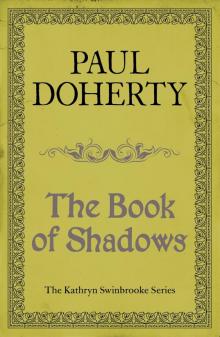 Book of Shadows
Book of Shadows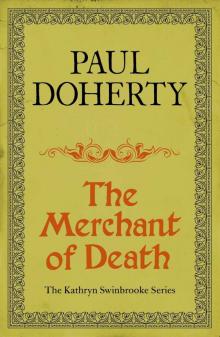 The Merchant of Death
The Merchant of Death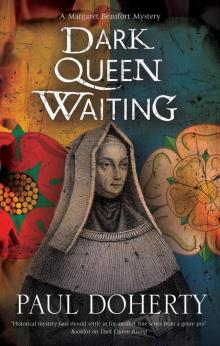 Dark Queen Waiting
Dark Queen Waiting Devil's Wolf
Devil's Wolf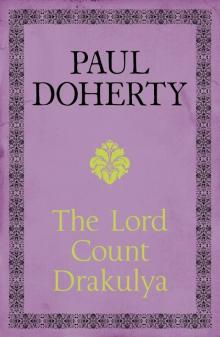 The Lord Count Drakulya
The Lord Count Drakulya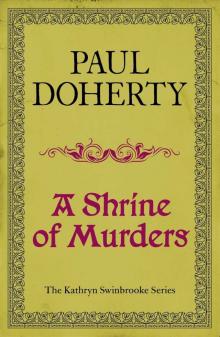 A Shrine of Murders
A Shrine of Murders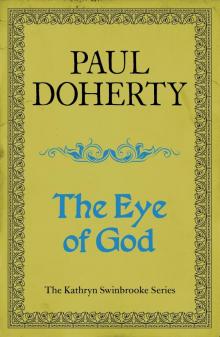 The Eye of God
The Eye of God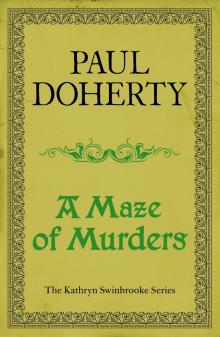 A Maze of Murders
A Maze of Murders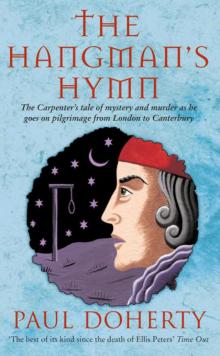 The Hangman's Hymn
The Hangman's Hymn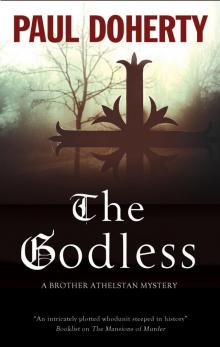 The Godless
The Godless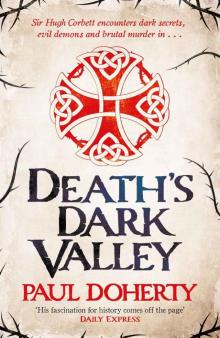 Death's Dark Valley
Death's Dark Valley Queen of the Night ar-4
Queen of the Night ar-4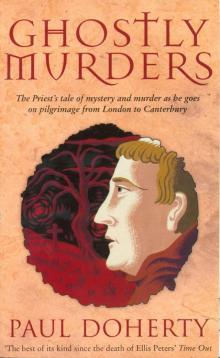 Ghostly Murders
Ghostly Murders Saintly Murders
Saintly Murders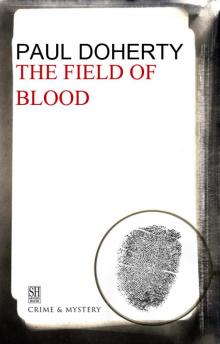 The Field of Blood
The Field of Blood Hugh Corbett 10 - The Devil's Hunt
Hugh Corbett 10 - The Devil's Hunt Assassin in the Greenwood hc-7
Assassin in the Greenwood hc-7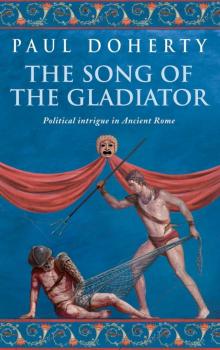 The Song of the Gladiator
The Song of the Gladiator Hugh Corbett 17 - The Mysterium
Hugh Corbett 17 - The Mysterium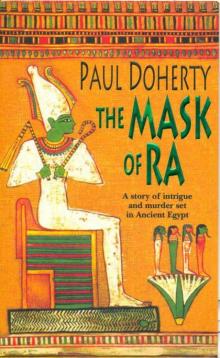 The Mask of Ra
The Mask of Ra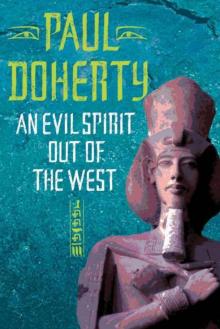 An Evil Spirit Out of the West (Ancient Egyptian Mysteries)
An Evil Spirit Out of the West (Ancient Egyptian Mysteries)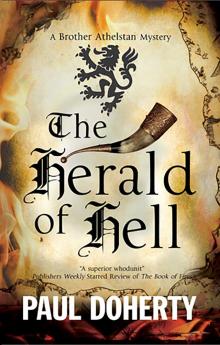 Herald of Hell
Herald of Hell Mathild 03 - The Darkening Glass
Mathild 03 - The Darkening Glass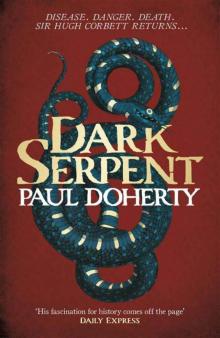 Dark Serpent (Hugh Corbett 18)
Dark Serpent (Hugh Corbett 18)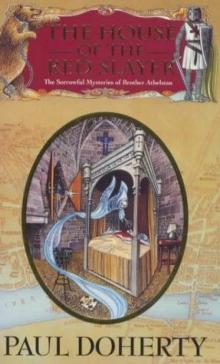 House of the Red Slayer smoba-2
House of the Red Slayer smoba-2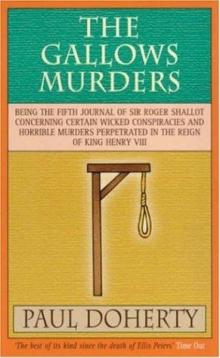 The Gallows Murders
The Gallows Murders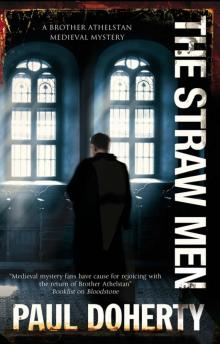 The Straw Men
The Straw Men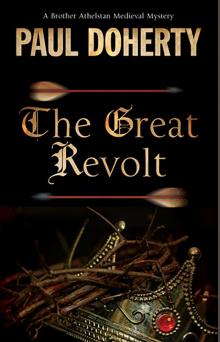 The Great Revolt
The Great Revolt The Rose Demon
The Rose Demon By Murder's bright light smoba-5
By Murder's bright light smoba-5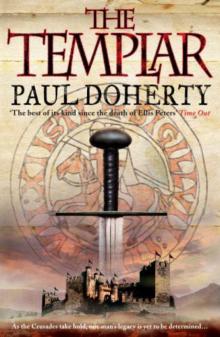 Templar
Templar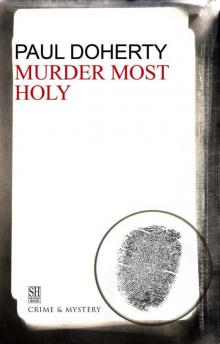 Murder Most Holy
Murder Most Holy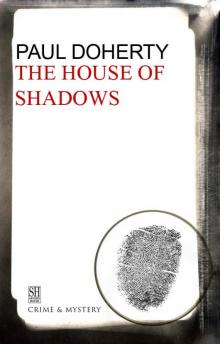 The House of Shadows
The House of Shadows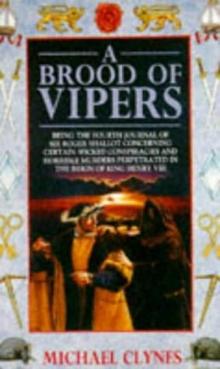 A Brood of Vipers srs-4
A Brood of Vipers srs-4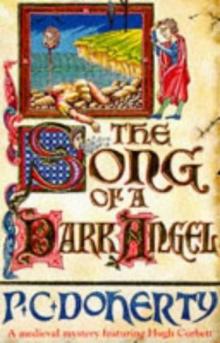 Song of a Dark Angel hc-8
Song of a Dark Angel hc-8 Satan in St Mary hc-1
Satan in St Mary hc-1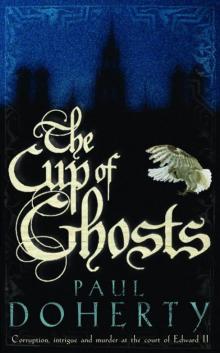 Mathilde 01 - The Cup of Ghosts
Mathilde 01 - The Cup of Ghosts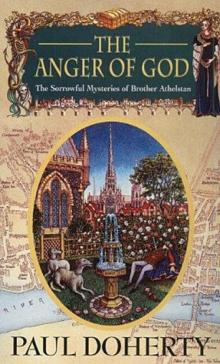 The Anger of God smoba-4
The Anger of God smoba-4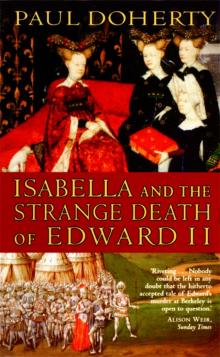 Isabella and the Strange Death of Edward II
Isabella and the Strange Death of Edward II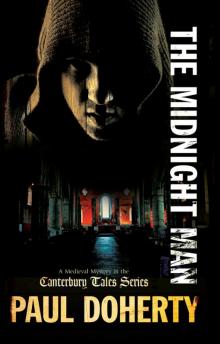 The Midnight Man ctomam-7
The Midnight Man ctomam-7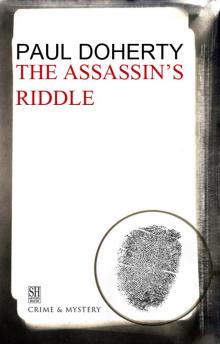 The Assassin's Riddle
The Assassin's Riddle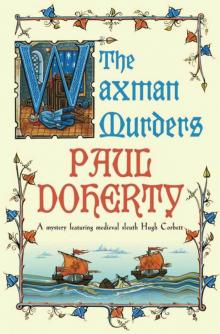 Hugh Corbett 15 - The Waxman Murders
Hugh Corbett 15 - The Waxman Murders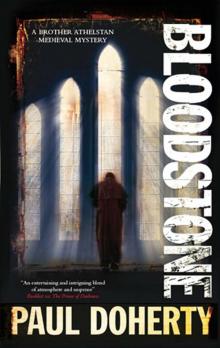 Bloodstone smoba-11
Bloodstone smoba-11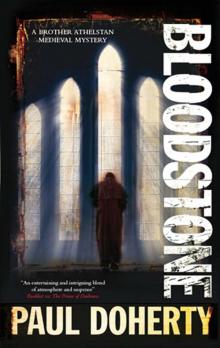 Bloodstone
Bloodstone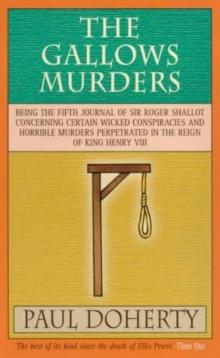 The Gallows Murders srs-5
The Gallows Murders srs-5 The Midnight Man
The Midnight Man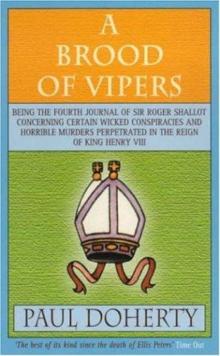 A Brood of Vipers
A Brood of Vipers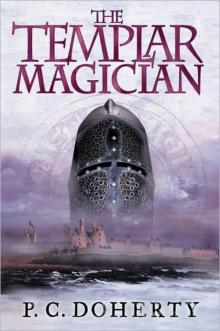 The Templar Magician
The Templar Magician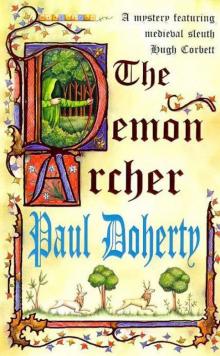 Hugh Corbett 11 - The Demon Archer
Hugh Corbett 11 - The Demon Archer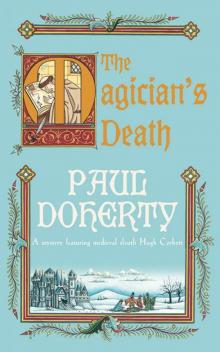 Hugh Corbett 14 - The Magician's Death
Hugh Corbett 14 - The Magician's Death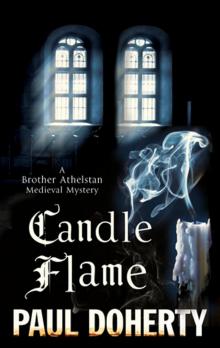 Candle Flame
Candle Flame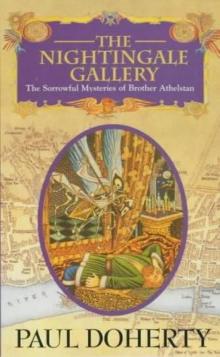 The Nightingale Gallery smoba-1
The Nightingale Gallery smoba-1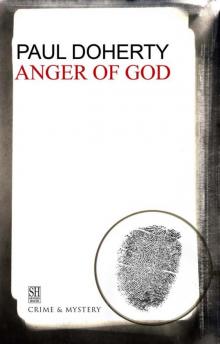 The Anger of God
The Anger of God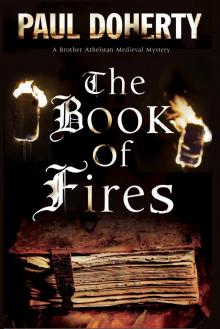 The Book of Fires
The Book of Fires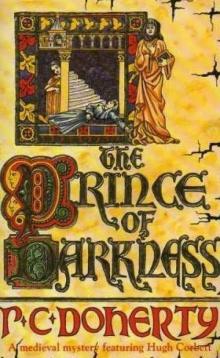 Prince of Darkness hc-5
Prince of Darkness hc-5 The House of Crows smoba-6
The House of Crows smoba-6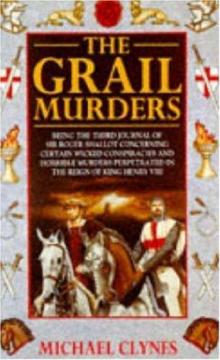 The Grail Murders
The Grail Murders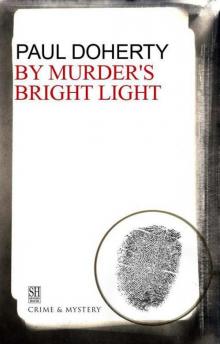 By Murder's Bright Light
By Murder's Bright Light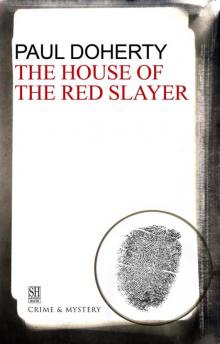 House of the Red Slayer
House of the Red Slayer The Devil's Domain
The Devil's Domain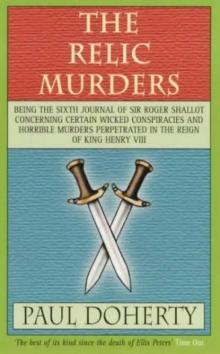 The Relic Murders srs-6
The Relic Murders srs-6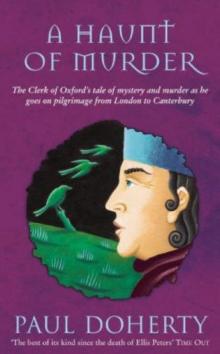 A haunt of murder ctomam-6
A haunt of murder ctomam-6 The Straw Men smoba-12
The Straw Men smoba-12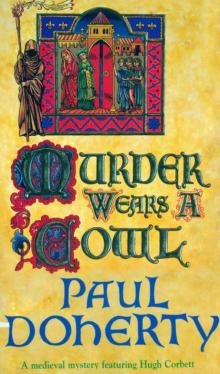 Hugh Corbett 06 - Murder Wears a Cowl
Hugh Corbett 06 - Murder Wears a Cowl An Ancient Evil (Canterbury Tales Mysteries)
An Ancient Evil (Canterbury Tales Mysteries)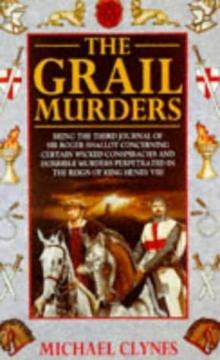 The Grail Murders srs-3
The Grail Murders srs-3 The Fate of Princes
The Fate of Princes The poisoned chalice srs-2
The poisoned chalice srs-2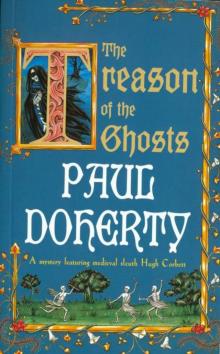 Hugh Corbett 12 - The Treason of the Ghosts
Hugh Corbett 12 - The Treason of the Ghosts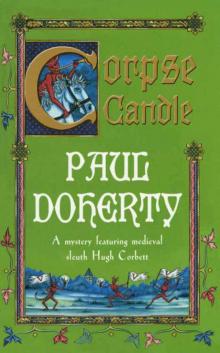 Hugh Corbett 13 - Corpse Candle
Hugh Corbett 13 - Corpse Candle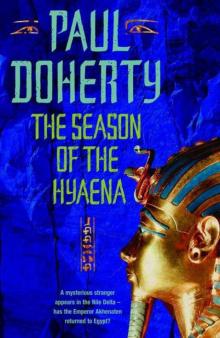 The Season of the Hyaena (Ancient Egyptian Mysteries)
The Season of the Hyaena (Ancient Egyptian Mysteries)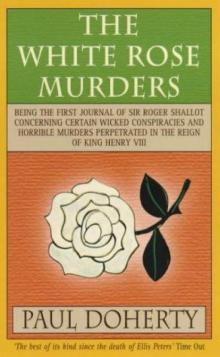 The White Rose murders srs-1
The White Rose murders srs-1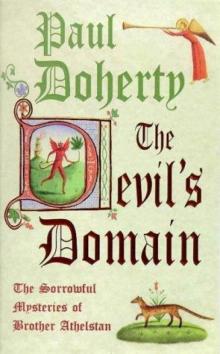 The Devil's domain smoba-8
The Devil's domain smoba-8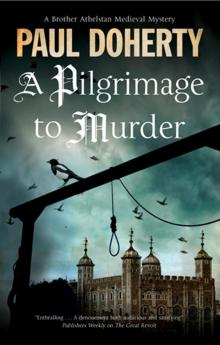 A Pilgrimage to Murder
A Pilgrimage to Murder Roseblood
Roseblood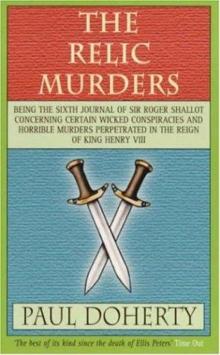 The Relic Murders
The Relic Murders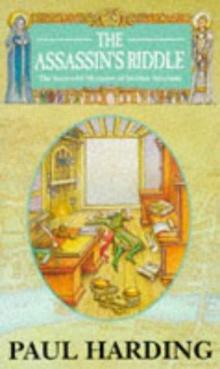 The Assassin's riddle smoba-7
The Assassin's riddle smoba-7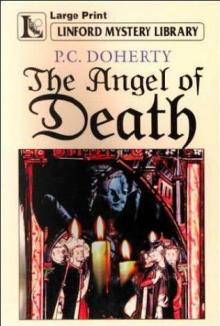 Angel of Death hc-4
Angel of Death hc-4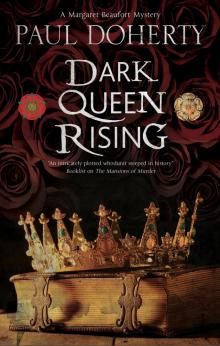 Dark Queen Rising
Dark Queen Rising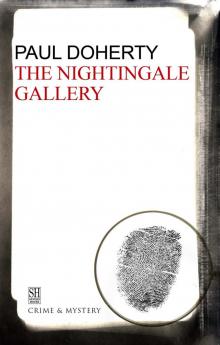 The Nightingale Gallery
The Nightingale Gallery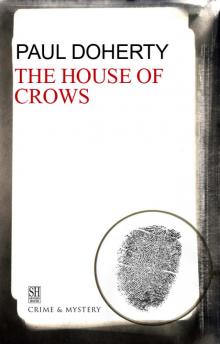 The House of Crows
The House of Crows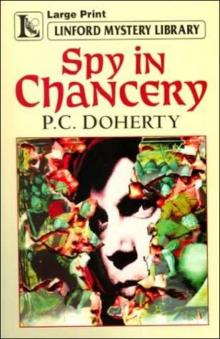 Spy in Chancery hc-3
Spy in Chancery hc-3